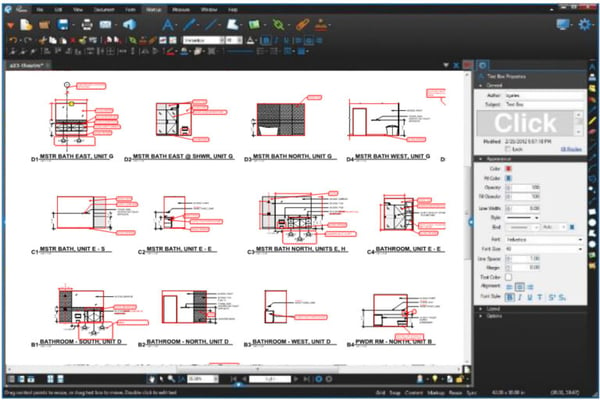When choosing an architect, you want the greatest value for your dollar. Unfortunately, comparing architecture fees is a difficult task. Not all architects charge the same way or include the same services in their quote, making it difficult to get an apples-to-apples comparison.
In our forty-four years of experience, we have seen numerous building owners choose architects on fee alone. This decision, however, did not always lead them to the services they desired. We are hoping to educate anyone entering the design and construction process and help them better evaluate the quotes they receive.
To help you through the selection process, we have broken down five steps you should use to compare architecture fees:
- Determine what they include in the fee
- Break down the fee by design phase
- Ask about their change order rate
- Assess their commitment to client experience
- Consider your long-term goals
After reading, you will be better prepared to interview architects and determine if an architect’s fee will provide the value you need.
5 Steps for Comparing Architecture Fees
1. Determine What the Architect Includes in the Fee
When you receive a quote from an architect, you should first determine if their fee will cover your project’s scope. Typically, architects divide services into two categories: basic and supplemental. Basic services are charged by the design phase, while supplemental services are charged as an additional expense.
For example, many architects exclude interior design from their basic services. If you ask for interior design services, they will be charged as an additional line item.
In your contract, your architect will specify which services are basic and which are supplemental. If you receive a quote that is significantly lower than other quotes you receive without much discussion of the project scope, it could suggest something is missing. It could also suggest the architect didn’t fully understand the project’s requirements at the onset.
This perceived saving could result in scope amendments and make the process feel like purchasing a discounted flight ticket. By the time you factor in the fees for luggage, seat selection, Wi-Fi, and in-flight refreshments, you may be paying as much as you would for an all-inclusive ticket.

Some services, like interior design, may be excluded from basic services.
2. Break Down the Fee by Design Phases
Second, you should determine how an architect will charge for each design phase. Architects charge for services in a variety of ways, including fixed rates, hourly rates, and percentages of construction costs. Every architect likely uses a different method, making it difficult to determine which fee is a better value.
For example, one architect may charge a percentage of the construction cost and divide the percentage between each design phase. Another architect may use a percentage fee for most phases, but charge Contract Administration (construction) at an hourly rate.
To compare fees, ask architects to break down their cost by design phases and services. If they charge some phases at an hourly rate, either provide set hours or ask them to estimate the number of hours it will take to complete the work.
Asking these questions will help create an apples-to-apples comparison when architects use different methods for charging clients.
3. Ask About Change Order Rates
Different building owners require different levels of documentation for their projects. Depending on the importance of budget and schedule, a project will require a thorough set of construction documents.
Creating drawings, writing specifications, and performing quality assurance reviews takes time. Therefore, the architect should factor this effort into their fee. If you receive a comparatively low quote, it could suggest the architect did not accurately predict the time and effort it takes to create thorough drawings and specifications.
If construction documents are inaccurate or missing information, the contractor will request change orders. Every project has some change orders, which is why many architects factor contingencies into the budget.
Too many change orders, however, can drive up construction costs beyond the allotted contingency. Additionally, excessive change orders can slow project timelines and cause more headaches for you and your team. For some building owners, the operational costs of a slowed timeline can be a major concern.
Asking about an architect’s construction change order rate (the percentage of changes compared to the construction cost) can help you determine if this situation is likely. If the architect does not account for the time it takes to perform quality assurance reviews, you may have a more stressful construction process than you would have otherwise.
Note: If you are comfortable with the risks involved, a higher level of documentation and a lower fee may be appropriate.

Thorough quality assurance checks can prevent change orders.
4. Assess Their Commitment to Client Experience
Along with the architect’s change order rate, you should also assess their commitment to Client Experience. A quality architect will engage stakeholders and help you find a solution that fits your needs. They will also visit the construction site regularly, answer questions promptly, and work to address problems before they arise.
Excellent Client Experience takes time. The fee should reflect the time and attention your project manager will devote to your project.
Alternatively, a low fee may reflect a lower level of service or a more rigid process that guides your team to a preconceived design or solution.
If you are concerned about Client Experience, ask about the architect’s experience with repeat clients. Architects with sharp project management and a commitment to their clients are more likely to get repeat work.
Additionally, ask about their feedback process. A formalized process for receiving and responding to feedback suggests a commitment to improving service.
5. Consider Your Long-Term Goals
Lastly, you should consider your long-term goals. In the end, the amount you pay for an architect is a small percentage compared to the overall cost of a building project.
This percentage is even smaller if you consider the long-term expenses of building operations. Studies show the cost of operating a building over its lifetime is five times more than its construction cost. Ideally, your architect will work to reduce these long-term expenses by finding solutions that improve the building’s energy efficiency and reduce utility and maintenance costs.
The potential return on your investment is even greater if you factor in staffing. Investing in a quality space can help improve workplace productivity and reduce the likelihood of employees taking sick leave. Hiring a trusted partner can help you achieve these long-term, money-saving benefits.
As you start interviewing architects, think about what you want to get out of your building project. A slightly higher fee is a worthwhile investment if you want someone who will engage your team and deliver something truly unique.
Learn More About Architecture Fees
Hiring an architect is an important decision, but it is not always clear if you are getting the value you need. Architecture fees can be complicated, but asking architects to break down their services, explain how they charge, describe their process, and disclose their change order rate can help you find someone who aligns with your goals.
You should also consider your long-term goals. The decisions you make with your architect can impact both construction costs and the long-term expenses of building operations. We believe the most successful projects occur when you work with a trusted partner who manages costs and advocates for your interests.
Wondering what you might pay for an architect? Read about the factors that influence architecture fees.
